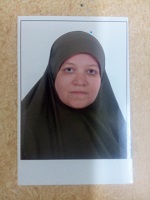Identification of sex plays a vital role in forensic and medico legal investigations. Recently, there has been an increasing interest in biometric technologies for human identification based on one's individual features. Fingerprints are the most effective identification of evidence, especially in criminal identification, in case of missing person or disaster victims. The aim of the present work is to find the sex differences based on fingerprint ridge density and its possible applicability in determination of sex in forensic medicine. The present study was conducted on300 students (150 males and 150 females) in faculty of Medicine, Sohag University aged between 18 and 25 years. For collection of fingerprints, a plate 12 × 12 inches will be cleaned and uniformly smeared with thin layer of black printer ink by using the roller. The mean value of the number of fingerprint ridges in 25 mm2 of the right hands was 17.73 ± 1.69 .The mean value of the number of fingerprint ridges in 25 mm2 of the left hands was 17.74 ± 1.73.The mean value of the number of fingerprint ridges in 25 mm2 of both hands was 17.74 ± 1.63. The mean value of the number of fingerprint ridges in 25 mm2 of the right hands was 14.82 ± 1.52.The mean value of the number of fingerprint ridges in 25 mm2 of the left hands was 15.22 ± 1.32 The mean value of the number of fingerprint ridges in 25 mm2 of both hands was 15.02 ± 1.33. Each individual finger in females has nearly 2-3 ridges more than males. The P value is < 0.001. The ring finger showed the highest difference between males and females in the right hand. The little finger showed the highest difference between males and females in the left hand. From the analysis of Receiver Operating Curve results showed that, a mean of right finger ridges of 15.9 is the most accurate cut point to differentiate females from males, with a sensitivity of 86% and specificity of 80%. A mean of left finger ridges of 16.3 is the most accurate cut point with sensitivity of 86% and specificity of 86%. The present study revealed that, females have a statistically significant ridges density more than males. The mean ridge densities can be used as a presumptive indicator of gender of an unknown print left at a crime scene also as a method of identification for mutilated bodies.

